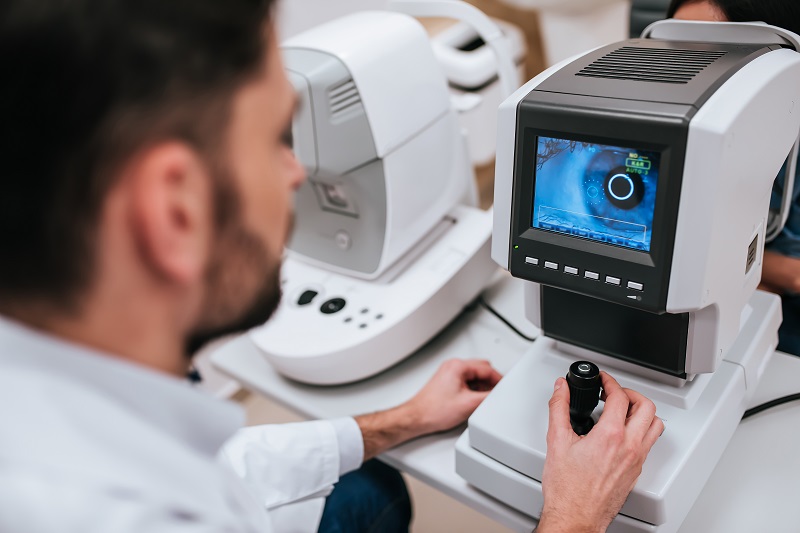
Regular checkups are just as important for your eyes as they are for the rest of your body. Even if you notice no changes or problems, there may be a condition developing that will require treatment. The best way to monitor for these issues is by scheduling regular eye doctor visits which should include a retina examination.
What Is a Retina Examination?
A retina examination lets your ophthalmologist look at the structures found at the back of the eye. Your pupils are dilated beforehand. Your eye doctor will shine a bright light and look through a microscope to assess the optic nerve, retina, and blood vessels. The process is comprised of four parts.
- Dilating the Eyes – The first thing your eye doctor will do is dilate your eyes with drops that cause the pupil to widen. This allows more light to enter and provides a clear view of the inside.
- Tonometry Test – Tonometry measures pressure inside the eye. This helps your ophthalmologist look for signs of glaucoma. A puff of air is blown directly into the eye or a pressure-sensitive tip is positioned near or up against the eye.
- Visual Field Test – This test measures the entire scope of vision. That includes the center and peripheral fields. One eye is tested at a time. Modern testing devices will also track the patient’s ability to maintain a straight-ahead gaze.
- Visual Acuity Test – This test involves reading an eye chart. This is the most well-known of all eye tests.
What Can a Retina Exam Diagnose?
A retina exam can diagnose conditions like hypertension, diabetic retinopathy, detached retina, and macular degeneration. Some problems are not accompanied by obvious symptoms, making a test necessary for early detection. Contact Grosinger, Spigelman & Grey Michigan’s Leading Eye Care Physicians today to schedule your retina examination.

